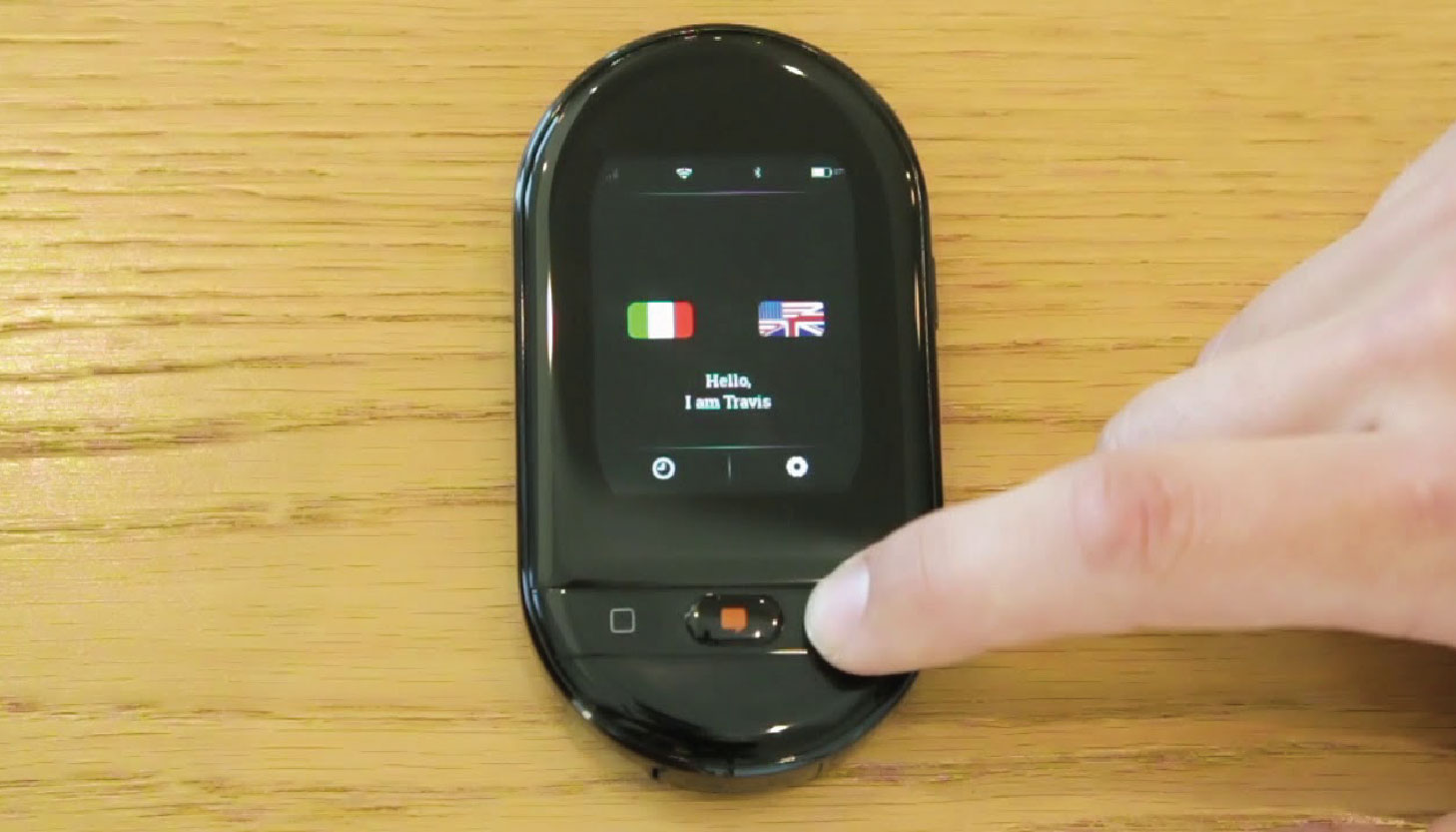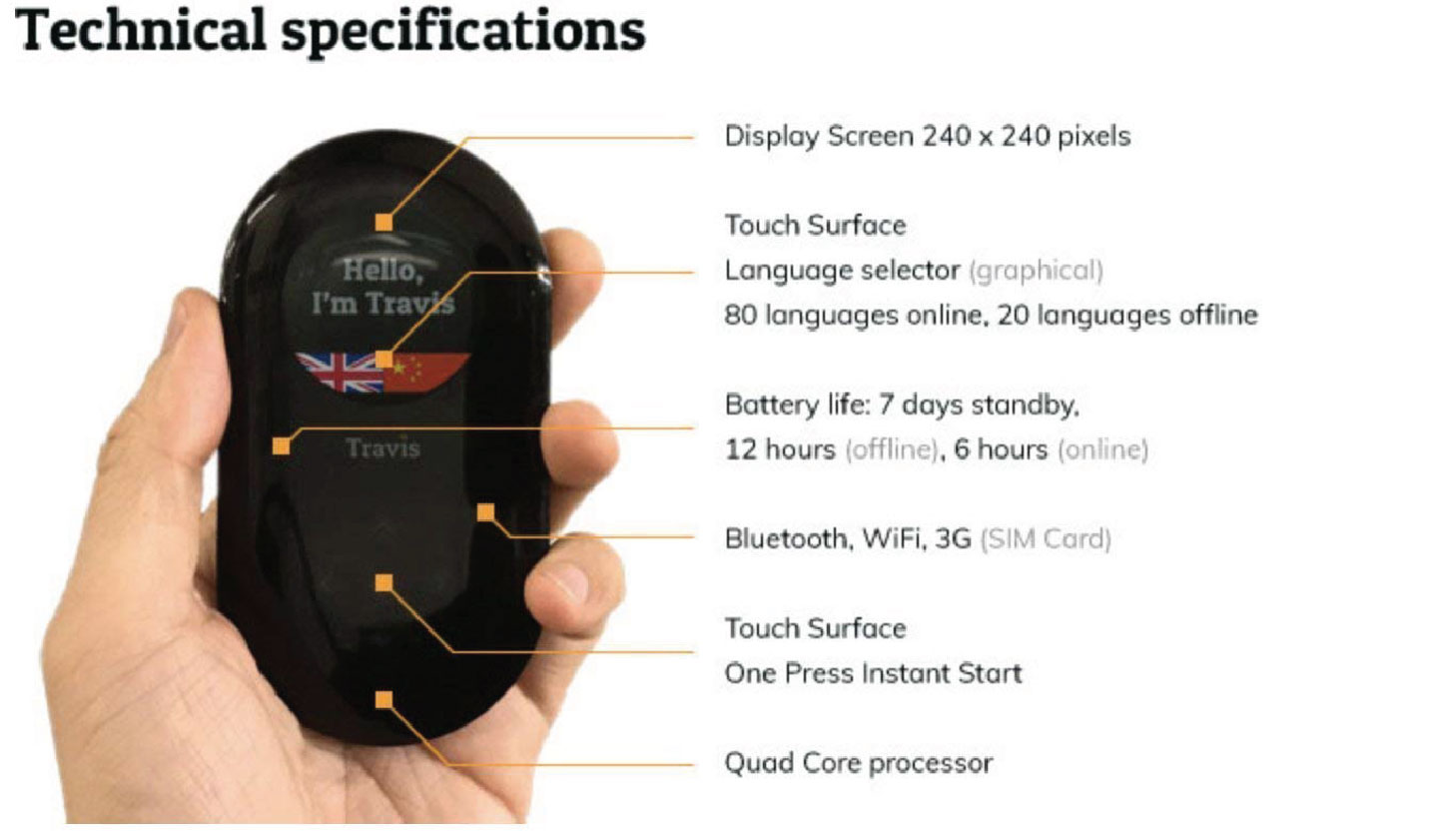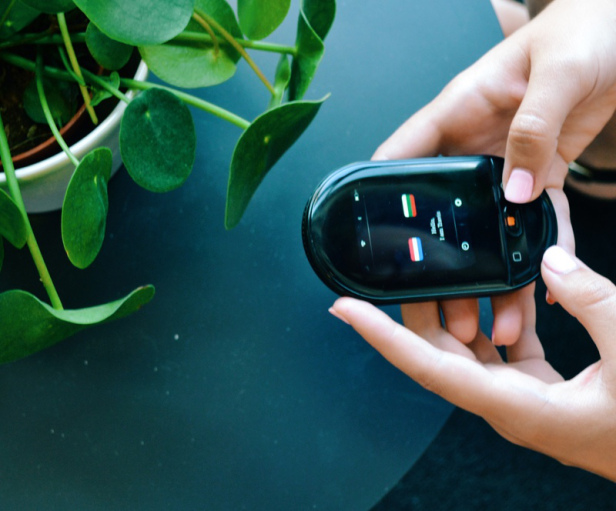We all know that travelling is a great experience to discover other cultures and traditions different to our own. However, the language barrier can often be an obstacle that makes us think twice about staying at home.
If you like travelling, visiting friends in other countries and using technology to plan your trips, then the pocket translator, Travis Touch, is just what you need for your next adventure.
What do we know about the Travis company?
Travis is a Dutch company that manufactures pocket translators and is now launching its latest project Travis Touch, the successor to the Travis One, which sold more than 110,000 units worldwide. Hardware and usability are the key improvements to the Travis Touch, which now includes several different digital translation engines.
Users
Since its launch in 2017, Travis products have been tested with consumers, national defence forces, airlines and hospitals. User feedback led Travis to reduce the number of physical buttons and to introduce a large touch screen for Travis Touch. Wireless charging was also added. At this point, Travis offers translation in 110 languages, of which the majority is speech-to-speech translation. A fast internet connection ensures the best translation. Travis continuously searches and integrates translation engines; it currently uses sixteen engines including Google, IBM and Microsoft.
The device: packaging and design
Travis Touch comes in a cardboard box, once open you’ll see the device first, the sim card slot is on the back, and the manuals, instructions and the micro to micro USB cable are underneath.
The device is completely black, with the company logo on the back and on the front side you have the 2.4 inch IPS touch screen, 3 small buttons and a LED light that shows the battery life.

Thanks to the oval shape, it’s quite comfortable to hold in your hand when talking.
“While being busy with apps on our phones, we lose the precious time that we could spend communicating with the people around us. This is why Travis was created as a device; to bridge the gaps in real communication with people from different cultures”, says Marijn Booman, Travis General Manager.
“At Travis, we believe that everyone should be understood, so we’re here to help bring true communication into people’s lives. That is why we developed a hardware device that enables you to translate and understand 100+ languages. After Travis One, we have received a lot of valuable feedback, which in return helped us create a new and improved product: Travis Touch. The device’s main improvements are in hardware and usability”, Gregor Noltes, Chief Marketing Officer of Travis, states.
But, how does Travis Touch work?
The first thing you should do after taking it out of the box is to charge it fully, this way you don’t have to worry about the battery. When it’s fully charged, turn it on and start the configuration process – don’t worry, it’s quite simple:
- Choose your native language
- Connect to a Wi-Fi network
- Your device is ready to use!
Travis Touch works without internet. However, results are best when connected to the internet, either with Wi-Fi or by using the SIM card, as you can get real-time translations through the 15 different translation applications. You can also use it offline although the results may not be as accurate.
It’s also important to emphasise how well the microphone works, even in noisy places, as it comes with active noise cancellation system.

Availability and price
At the moment you can only buy it from the company’s online store and the official price is €249, but it’s expected to be available from other distributors like Amazon soon.
This is a completely innovative gadget that allows us to “talk” in 105 different languages with a real-time translation. However, it’s not cheap, and is geared towards a very specific user group who are not happy with the results from Google Translate. If you have to talk with people from different countries on a regular basis for work reasons, then it will definitely pay for itself in no time at all, but if you’re someone who just goes on holidays once or twice a year it may not be worth the high price.
Conclusions
Pros:
- Comfortable design
- Excellent autonomy
- Easy usability
- Microphone with active noise cancellation
- Recognises 105 languages
- Voice and text translations
- Real-time translation
Cons:
- Internet connection required to minimise the margin of error
- High price







